Introduction
When Grand Seiko recently launched the latest recreation of the first Grand Seiko - SBGW295 - I was immediately reminded of a ‘redone’ dialed first Grand Seiko that sold a few months back on Yahoo Japan.
I was going to write up some brief musings on the new release (not least the fact that the dial would seem to contribute to in excess of 50% of the cost of the watch at retail), and then my mind wandered, and it occurred to me that - to the best of my knowledge - nobody had ever written an article that detailed every modern Grand Seiko reference that is a recreation of the first Grand Seiko.
When I first started collecting Grand Seiko, I kept a record of the modern recreations of the vintage references - not just the “First”, but also the 57GS, 44GS, and 62GS.
There was a period in the early to mid 2010’s when it looked like Grand Seiko were working their way through all the vintage series, issuing both “recreations”, where the overall watch design was intended to pretty much replicate that of the core vintage pieces, and “reinterpretations”, where the vintage piece was taken as a starting point, and then brought more up-to-date.
Following the release of three recreations of the first Grand Seiko in 2011 (and as we will shortly see, this wasn’t the first time that Grand Seiko had recreated their first reference), there followed recreations and reinterpretations of the 44GS in 2013, the 57GS in 2014, and the 62GS in 2015.
Below are pictured SBGW047 and SBGR081 - examples of the recreation and reinterpretation of the 44GS.
For whatever reason - quite possibly the decision to completely reimagine the brand and split it off from the parent company in 2017, we never got to see recreations of any of the later vintage series.
I might cover those other releases in another article at some point in the future, but for now, I will be detailing only the true recreations of the “First”.
For those interested in the vintage first Grand Seiko, please do check out the primer article I wrote at the tail end of last year -
Credit
I am indebted to the work of Anthony Kable of Plus9Time, who has created, and is maintaining, a database of every modern Grand Seiko reference, from SBGS001 released in 1988, through to the current day, and beyond.
Without Anthony’s extraordinary efforts, the history of the first Grand Seiko recreations would have been considerably more difficult to write. As we are about to discover, there are a lot of references to cover!
The references detailed below are listed in chronological order of release by year, and then alphabetically by reference number within the year. For full details on any of the references, I would encourage the reader to visit Anthony’s database.
Clicking on the reference number above the photo will take you directly to the relevant entry in the database.
SBGW004 (released in 2001)
Although it could be argued that there are a couple of earlier references that were “inspired” by the first Grand Seiko (such as the rather enigmatic SBGS005 in platinum, which even has the branding text at the top of the dial), the 18K yellow gold cased SBGW004 was the first time Grand Seiko set out to recreate their original reference in the modern era.
With a case diameter (excluding crown) of 35mm, the watch is sized almost identically to the original, but the immediately obvious thing about it is that - like all other recreations of the “Firsts” that were to follow - the word “Chronometer” is missing from the dial under the Grand Seiko logo.
This is an unfortunate result of Grand Seiko adhering to the ridiculous demands of the Swiss watch industry that no watch can call itself a Chronometer unless it has undergone testing in Switzerland. On the plus side, it does mean that you can always differentiate a modern recreation from the original vintage piece very easily!
SBGW004 was issued in a limited edition of 300 pieces, at a price of 880,000 Yen, to commemorate the 120th anniversary of Seiko.
SBGW033 (released in 2011)
It would be 10 years before Grand Seiko issued another First recreation, and in 2011 - to celebrate the 130th anniversary of the company, they released a set of three watches.
This time slightly increased in size to a 35.8mm case diameter, SBGW033 was cased in stainless steel. If you look carefully, you will notice that not only is - as expected - the word “Chronometer” missing from the dial, but in addition, there is no SD dial symbol underneath the Diashock text.
This is because the SD dial symbol indicates that the indices are made from solid precious metal, and not just plated. In the case of SBGW033, the indices are made from steel, and so the SD symbol is not used.
The reference was made in a numbered edition of 1300 pieces, and retailed for 430,000 Yen.
SBGW039 (released in 2011)
Released alongside SBGW033 to commemorate Seiko’s 130th anniversary was the platinum cased SBGW039.
The reference was limited to just 130 pieces, at a retail price of 2,000,000 Yen.
Note that - like the steel cased watch - SBGW039 also does not have the SD dial mark. I am unsure as to what the indices were made from on this watch, but the lack of the SD mark was probably to keep a consistent dial design across the three models released that year.
In addition to the different case material, the steel and platinum cased watches can be immediately identified by their second hand. The steel has a blued hand, whilst the platinum one is the same white metal colour as the hour and minute hands.
SBGW040 (released in 2011)
The final recreation of the first Grand Seiko released in 2011 to commemorate the 130th anniversary of Seiko seiko was SBGW040, cased in 18K yellow gold.
Like the platinum cased example, the watch was issued in a limited edition of 130 pieces, although at “just” 1,300,000 Yen, was certainly more attainable.
Whilst superficially looking very similar to SBGW004 from a decade earlier, the two watches are immediately distinguishable from the lack of the SD mark on the later watch.
SBGW251 (released in 2017)
At Baselworld in 2017, Grand Seiko announced that they would be split off from their parent company, and the entire range was updated to remove the “Seiko - Grand Seiko” branding from the dials, moving the “Grand Seiko” text to the top of the dial.
This was obviously an opportune moment to recreate the first Grand Seiko again, and - as was the case in 2011 - a trio of watches in different case materials were debuted.
Upsized to a more modern (and internationally - Grand Seiko had barely started offering their watches outside Japan at the time of the last recreations in 2011) acceptable case diameter of 38mm, once again we have limited editions in platinum, 18k yellow gold, and steel cases.
SBGW251 was the platinum cased watch, retailing for 3,200,000 Yen, and limited to 136 pieces (2017 being the 136th anniversary of Seiko).
It does seem a little odd to me that in the year Grand Seiko split from Seiko they would choose to issue a limited edition number that related to the anniversary of the company they had just departed, but perhaps it was a timely homage.
In addition to the case size, SBGW251 can be distinguished from the earlier platinum cased SBGW039 by the welcome return of the SD mark beneath the Diashock, indicating the indices are made from gold.
SBGW252 (released in 2017)
I’m sure there is a very good reason why Grand Seiko chose to release the 18k yellow gold cased 2017 recreation in an edition of 353 pieces, but I don’t recall what it was!
With a dial layout pretty much identical to the first “First” reissue (SBGW004), it is primarily the case size - again, 38mm like the platinum - that differentiates the watches.
The watch retailed for 1,800,000 Yen
SBGW253 (released in 2017)
The final recreation launched at Baseworld in 2017 was the steel cased SBGW253.
Interestingly - unlike in 2011 - Grand Seiko chose not to keep the same dial layouts across the three watches, and with the steel cased watch having steel indices, they dropped the SD mark from the lower part of the dial.
Once more featuring a blued second hand, this means that SBGW253 looks very similar to 2011’s SBGW033, but in the larger case size of 38mm.
It was released as an edition of 1960 pieces (to commemorate 1960 being the year the first Grand Seiko debuted), at a price of 600,000 Yen.
SBGW257 (released in 2020)
With 2020 being the 60th anniversary of Grand Seiko, it is no surprise that the brand saw fit to celebrate the event with the release of more recreations of the first Grand Seiko.
Once again we have a trio of releases in 38mm cases, starting off with the platinum cased SBGW257. Priced at 4,000,000 Yen, at first glance it looks to be almost identical to the limited edition SBGW251 from 2017.
However, there are a some differences. Firstly, this watch - like the two other references launched alongside it - is not a numbered limited edition. Whilst of course production is limited, it was launched as part of the regular range, and as of the time of writing, remains available.
This time around, the case is manufactured from 950 platinum, as opposed to the 999 platinum used for SBGW251. Perhaps of more interest to those familiar with the variants of the vintage first Grand Seiko, we find the Grand Seiko logo on SBGW257 to be carved into the dial.
If one were to turn the watch over, the difference between it and SBGW251 is immediately apparent, since this watch has a display back (all previous recreations of the first Grand Seiko have solid casebacks).
SBGW258 (released in 2020)
As was the case in 2011 and 2017, the second of the three first Grand Seiko recreations is cased in 18K gold. Like the platinum above, it joined the regular Grand Seiko range, and is not a numbered limited edition.
Priced at 2,800,000 Yen, I suspect even the most seasoned expert in modern Grand Seiko would have trouble differentiating this watch from 2017’s SBGW252 from the dial side. However, as with the other two references forming this release, turning the watch over we would discover a display caseback.
SBGW259 (released in 2020)
The final reference in the set of three recreations of the first Grand Seiko, released in 2020 to celebrate the 60th anniversary of the company is SBGW259.
SBGW259 sets new ground for first Grand Seiko recreations in two ways. The dial is a very striking deep blue, and the case is made from titanium, more specifically, Grand Seiko’s “brilliant hard titanium”.
As with its precious metal counterparts, we find quite a significant price increase for the “base metal” reference when compared to the 2017 limited editions, with the watch priced at 850,000 Yen, compared to 600,000 Yen for the steal cased SBGW253.
SBGW260 (released in 2021)
Another year, another anniversary to celebrate.
If you’ve been paying attention, you can’t help to have noticed that when Grand Seiko came under the parent branding (both structurally, and on the dial), we saw releases in 2001 and 2011 of recreations of the first Grand Seiko to celebrate Seiko’s 120th and 130th anniversary.
It is only fitting then that - despite the new found independence of Grand Seiko - 2021 should see a limited edition release to celebrate Seiko’s 140th anniversary.
One can’t help but feel that anyone who had purchased the non-limited SBGW258 in 18K gold might have been a little put out by a very similar release just months later, not least because SBGW260 is a limited edition of 350 units.
Once again, we have a raised logo dial with the SD mark indicating indices made of solid gold, and a display caseback.
The key difference between the two references however is the case material. Whereas SBGW258’s case (and indeed, all previous first Grand Seiko recreations in 18K gold) is yellow gold, SBGW260 is presented with a pink gold case.
Turning the watch over, there are differences to be found in the movement finishing, and an additional gold plate with the Seikosha “S” trademark engraved in it.
First up, here’s the movement side of SBGW258 -
And for comparison, here is SBGW260 -
Priced at 3,000,000 Yen, there was a 200,000 Yen premium over the non-limited yellow gold reference from the year before.
SBGW271 (released in 2021)
To date, SBGW271 is by far the rarest of all the first Grand Seiko recreations, being a limited edition of just 12 pieces in platinum for the 190th anniversary of the Takashimaya department store, and priced at 4,400,000 Yen.
In the modern era, Grand Seiko have a long history of producing limited editions for their retail partners in Japan, and one can only assume that they have a very good relationship with Takashimaya, having created no fewer than 21 different references exclusively for the company since 2006.
Whilst most collectors outside Japan will be aware of some of the Wako limited edition Grand Seikos, I suspect almost nobody would even be aware of the existence of this piece were it not for Anthony Kable’s research.
Personally I feel the 10% price premium for this reference over the standard range model SBGW257 is an absolute bargain. I have yet to see a “live” photo of this reference - let alone one in real life - but it does appear clear from the single catalogue photo available that the watch retains the carved logo dial of SBGW257, but the dial colour is much closer to that of the vintage references, having a slightly cream coloured matte finish.
It truly is an absolute stunner - the contrast of the blue second hand against the cream dial is just devine - and were it not for something coming up next, SBGW271 would without question be my favourite first Grand Seiko recreation of all time.
SBGZ005 (released in 2021)
One thing you may have noticed in my brief write-ups of all the references prior to this one is that I haven’t detailed the movements in the watch (except to point out the different finishing between SBGW258 and SBGW260).
As with the vintage reference and its 3180 movement, all the recreations detailed until now use manually wound mechanical calibers. The first - SBGW004 from 2001 - uses the 9S54 movement, and all subsequent recreations utilize the 9S64 movement.
SBGZ005 is the first example of a first Grand Seiko recreation to be based on a Spring Drive movement, and what a way to make an entrance.
Produced in an edition of 50 pieces, commemorating the 160th anniversary of the birth of Seiko’s founder, Kintaro Hattori, the 9R02 manually wound Spring Drive caliber is cased in platinum (37.5mm in diameter), and priced at an eye-watering 10,500,000 Yen - more than double the price of the next most expensive platinum cased first recreation.
There are a number of reasons for that significant price differential, not the least being that this watch is produced in Seiko’s famed “Micro Artist Studio”, where Credor Masterpiece watches such as the Eichi II, Sonnerie, and Minute Repeater hail from.
Naturally this means that the movement finishing on the 9R02 is simply in a different league to that found on the mechanical caliber watches.
One interesting detail about the watch is that - like the Credor Eichi II - there is a gold plate screwed to the main bridge with text that can be customised to the client’s liking, and I know from detailed discussions with an owner of an SBGZ005 that Grand Seiko will go to extraordinary lengths to accommodate a client’s specific wishes.
But the standout aesthetic feature of SBGZ005 must surely be the dial.
I have written in detail about the background to this dial in an earlier newsletter, and should you wish to know more, I would encourage you to read it -
It does seem a shame to me that Grand Seiko have not shared more details about exactly how this dial is created, but regardless, I believe I am correct in saying that - despite the initial sticker shock - the reference has now sold out.
SBGW295 (released in 2023)
And so we wrap-up the newsletter with the most recent recreation of the first Grand Seiko - this year’s SBGW295, released to commemorate the 110th anniversary of the very first Seiko wristwatch, the Laurel.
As with SBGZ005, there is a bit of a sticker shock with regards the pricing of this reference, which - despite being cased in a non-precious metal - is an initially head-scratching 1,650,000 Yen.
Cased in brilliant hard titanium, and based on the 9S64 caliber - just like 2020’s blue dialed SBGW259, which comes in at 850,000 Yen - clearly that price difference can only be down to the dial.
And when you learn how the dial is created, all of a sudden that asking price doesn’t seem too steep after all.
I will refer the reader to the GS9 Club’s excellent write-up on the watch for the details and more photos, but in broad terms, the dial base is painted with a black urushi lacquer, upon which the maki-e hour indices are then built up by hand, before being sprinkled with gold powder.
And not only the dial markers, but the Grand Seiko branding is also created entirely manually, as evidenced in this wonderful photo -
All of a sudden that 800,000 Yen premium over the price of SBGW259 doesn’t seem so bad after all, does it?
But there is perhaps a bit of a issue here that is worth highlighting.
It’s probably safe to assume the dial of SBGW259 probably contributes something in the region of 100,000 Yen to the final retail price of the watch (note - I’m not saying that’s the cost to produce the dial, but that is a reasonable estimate as to its share of the retail price once marked up). With an 800,000 Yen price differential to SBGW295, that would mean the dial contributes something in the region of 55% of the price of the watch.
Doesn’t this feel a little ‘imbalanced’ when considering the rest of the Grand Seiko range, and indeed, pretty much any watch whose dial isn’t encrusted with gemstones?
I can’t help feeling that this dial really deserves to be in a precious metal case, and perhaps with a much better finished movement (9R02, anyone?).
However, having said that, this watch does give a lot more people the opportunity to purchase a Grand Seiko with Eichi II level dial. In fact…
The manual work involved in creating this dial - and especially that hand painted Grand Seiko logo - is arguably a level above that involved in painting the dial of the Credor Eichi II.
In the marketing material for the Eichi II, Seiko go to great lengths to explain the painstaking process behind painting the dial means that it takes an entire day to create just one piece.
Yet SBGW295 is being produced in an edition of 500 pieces, and from the publicity material it would seem that just a single urushi master - Isshu Tamura - is responsible for creating the hour markers and Grand Seiko logo.
Tamura-san is going to be a very busy man producing those dials!
To learn more about Tamura-san’s remarkable work, I would strongly urge you to check out a feature on him on the Seiko Watches website here.
Now here’s a thought… how about producing a unique piece in platinum and with the 9R02 for this year’s Only Watch, Grand Seiko?!
And that’s it - for now.
I wonder how long we will be waiting before the 15th reissue of the first Grand Seiko will be released?!

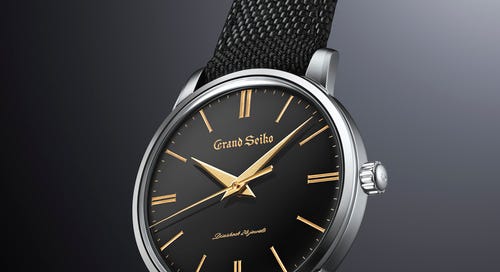



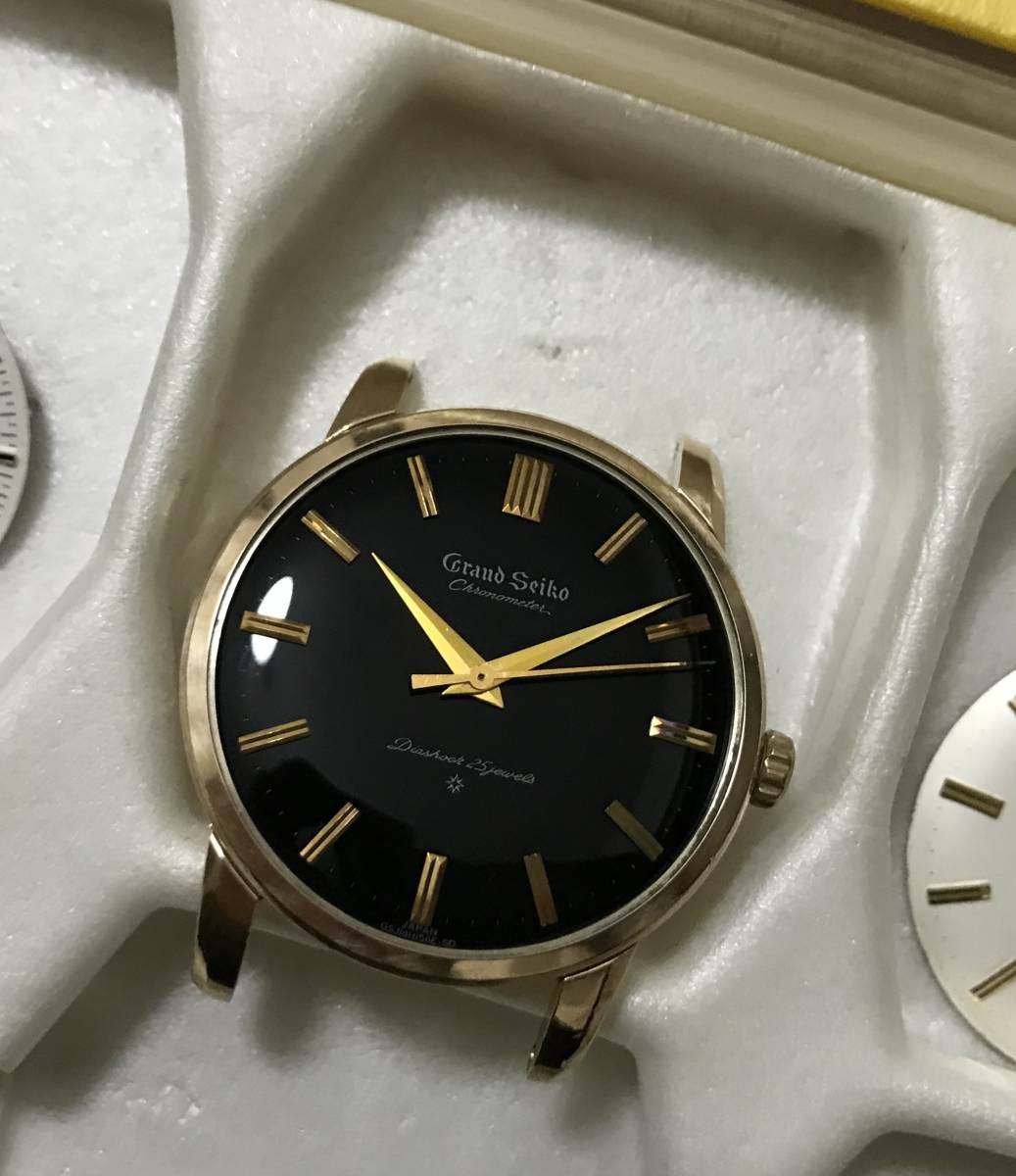


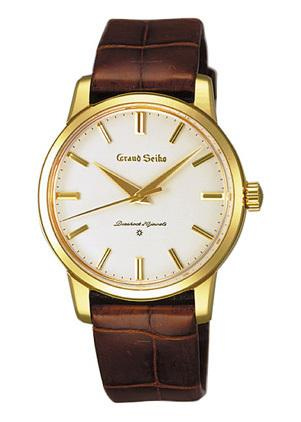


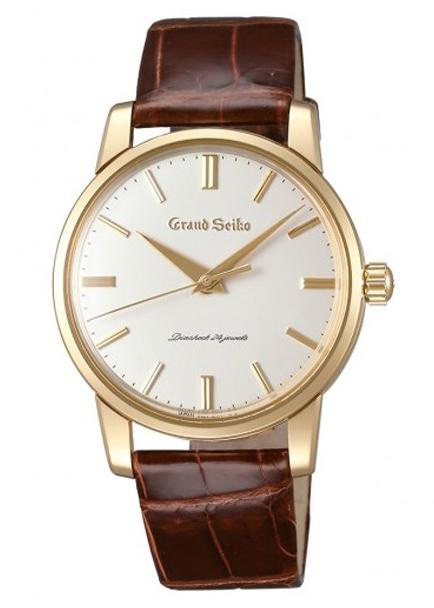









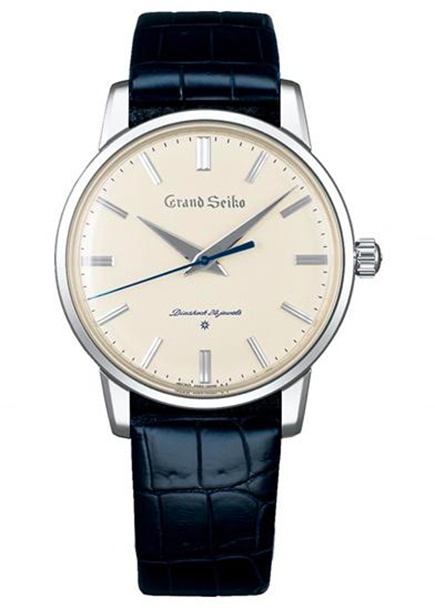






Great write up Gerald. As for the number of the SBGW252, 353, it was because the first GS was released on the 353rd day of the year 1960.
Also what’s your thoughts on GS recreations costing more than the originals? Modern Daytonas and Royal Oaks are cheaper than 5402s and Paul Newmans, why do you think it’s opposite for GS and is it “correct”?